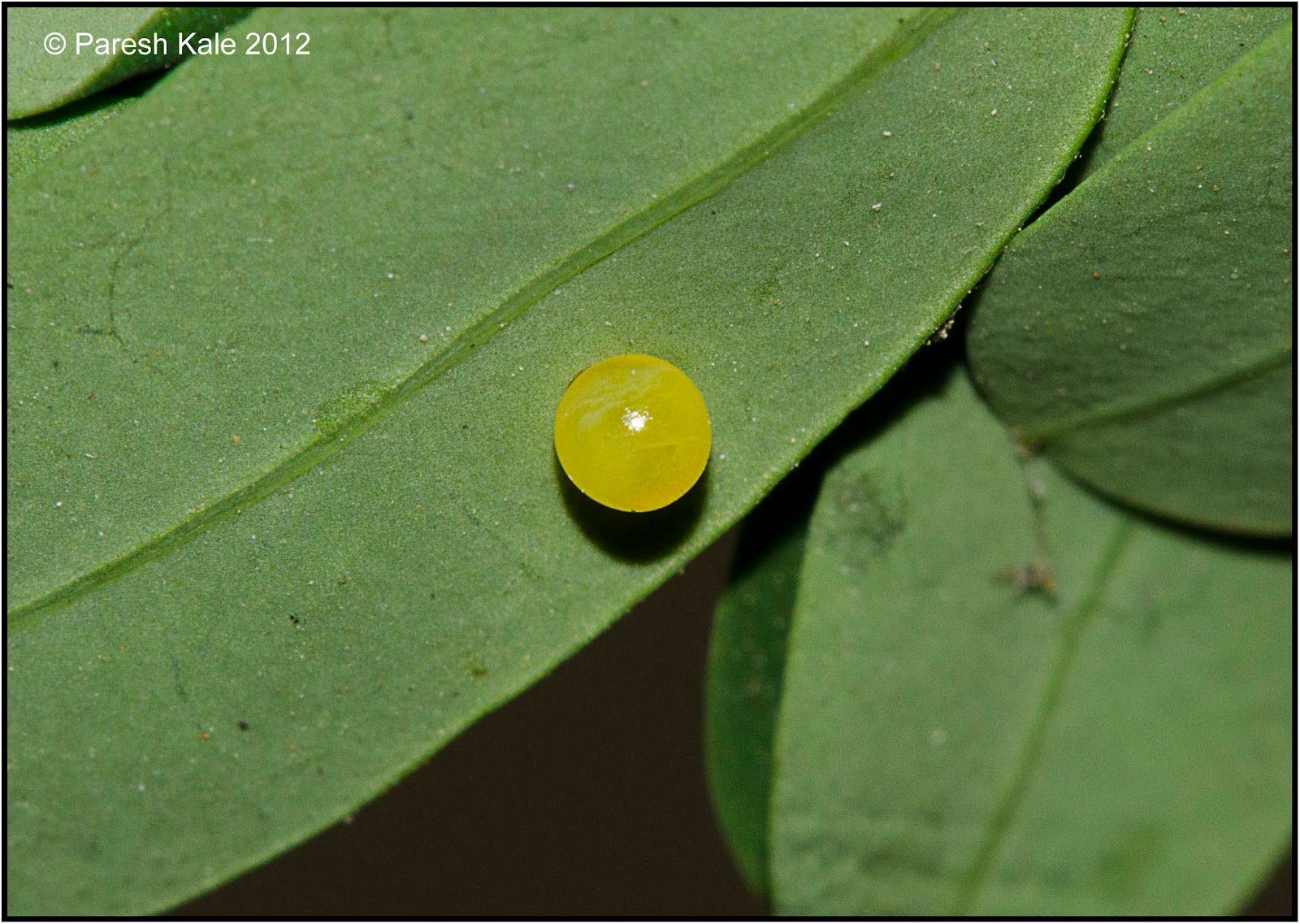 |
| Top and side view of a Common baron egg laid on Cashew leaf |
 |
| Zebra blue laying egg on Plumbago. |
 |
| Fresh Egg of common crow, sticky liquid is seen at the base |
Few observations of egg/s, may lead to conclude about the butterfly species and to determine whether the egg was laid by butterfly or some other insect. Here are some points which can be considered while observing eggs:
 |
| Top view of dome shaped egg of Giant Red Eye |
1. The larval host plant: Every butterfly prefers one out of bunch of preferred plants to lay eggs. This information and verification in the checklist reduces the list of possible candidates to few. For example, If a butterfly egg is found on coconut tree, most likely it would be of common palmfly. Some species need association of ant for caterpillar growth. In such cases, female prefers the plant only if ants are present. On very few occasions, egg is laid in the vicinity of the larval host plant. In this case, caterpillar searches for right plant and starts feeding. A rare case is female making a mistake in identifying the larval host plane. Such "oviposition" mistakes are uncommon but have been reported. Me and Abhay were involved in one such case by common wanderer female. She laid eggs on Ziziphus, which is not a LHP of the species involved. We searched for its usual LHP, Capparis, in the vicinity. We found none.
2. The shape of an egg: It differs from family to family.
a) White and yellows: Eggs like bottle shaped or grain of rice.
b) Swallowtails : Round shape like ball.
c) Blues: Semi-spherical or dome shaped with spines
d) Skippers: dome shaped without any markings
e) Brush-footed butterflies: Half-open flower
3. Number of eggs: Number of eggs laid in a batch depends on the butterfly species. Some lay single egg while some lays many eggs in batches. Number of eggs in batch may vary from a small batch of 2-3 eggs to a big hundred. Egg laying in small batches for few days may happen in case of some species. Common wanderer is observed to lay around 7 eggs in two batches. Small salmon Arab, Tawney Castor may lay around hundred eggs.
4. Location on surface where egg is laid: Leaf of larval host plant is most preferred place to do so. Sometimes its laid under the leaf, over the leaf, on offshoot. Some species choose flowers to lay egg on.
 Spherical egg of Common Nawab |  Seven eggs of Common Wanderer, laid in two batches |
 Egg of Common Sailor on tip of leaf |  Most likely egg of Dark evening brown |
References:
1. Butterflies of peninsular India by Dr. Krushnmegh Kunte, 1st Editiion, 2000, University Press Pvt. Ltd.
By Paresh Kale



where can i get butterfly eggs for school projects in mumbai im a teacher and want my kids to see the process live
ReplyDeleteDear Sanmita, you can visit Ovalekar wadi or SGNP or MNP for the same. See if u can ind some butterfly enthusiast around you !
Delete